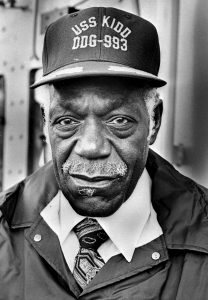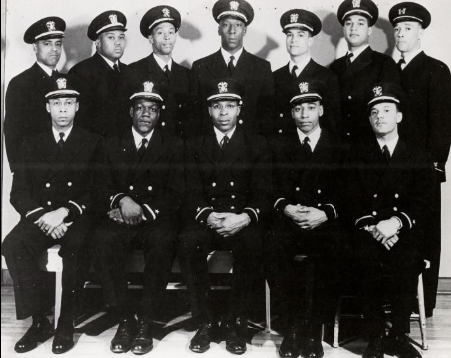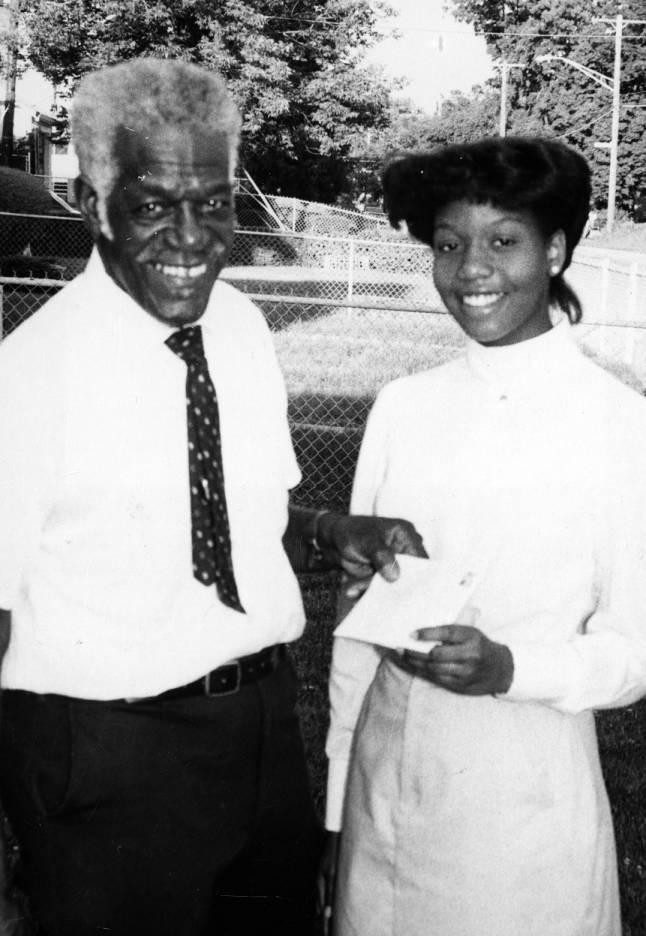
Photo info ...
Credit: U.S. Naval Institute Photo ArchiveView Source
(Jan. 18, 1919-May 9, 2006). Graham E. Martin was born in Tobacco City, Tennessee. He later moved to Indianapolis and graduated from . He earned a BA in history from Indiana University in 1941 and a MA in history from Howard University, where he also served as an instructor. He worked as a department guard at the state department and then enlisted in the U.S. Naval Reserve (USNR) on July 31, 1942.
The USNR commissioned him as an ensign on March 1, 1944. In July, he was assigned to the staff of Commander, Naval Local Defense Forces, Twelfth Naval District, in San Francisco, California. In that role, Martin served on board the yard patrol craft YP-131.
In January 1944, there were nearly 1 million Black sailors in the U.S. Navy, but none were officers. Under great pressure from the public and civil rights leaders, the Navy reluctantly selected Martin and a group of 15 others to enlist for officer training at the Recruit Training Center, Great Lakes, in Illinois that month. During officer training, Martin was the only Black player on the Great Lakes Naval Training Center football team.

Normal officer training lasted 16 weeks; Martin and his cohort were given 8 weeks. The group of 16 endured the training program in segregated facilities at Great Lakes without the aid of much of the equipment that could have aided their training. They studied under the tutelage of white officers who were not interested in whether the men passed, failed or learned anything at all. With a strict lights-out policy at 10:30 PM, they sat with flashlights in hand, sheets draped over the windows, studying together, each man bringing his expertise to help strengthen the skills and knowledge of the others.
Their marks raised concern that the men had cheated, but upon retaking certain components of the exams, they scored even higher with an average grade of 3.89 out of 4.00—the highest average of any class in Navy history at the time.
In March 1944, the Navy only commissioned 12 as officers. A 13th was commissioned as a warrant officer, above noncommissioned men but still below ensigns, the lowest officer rank. No official reason was given for not commissioning all 16 men. Because Navy policy barred Blacks from being assigned to combat ships, this first class of Black officers was assigned to training Black recruits, overseeing all Black logistics units, or commanding small vessels, such as harbor tugs, patrol craft, or oilers, that were mostly crewed by Black sailors.
Martin served as a battalion commander at Great Lakes, onboard a yard patrol craft and a yard oiler at San Francisco, and as athletic training officer in Hawaii. A year later, Martin was assigned to Service Force, Pacific Fleet. The Navy promoted Martin to lieutenant (junior grade) on August 1, 1945, and subsequently assigned him to Logistics Support Company No. 515 on Eniwetok Atoll, Marshall Islands.

After the war, he briefly served at Headquarters, Eleventh Naval District, in San Diego before transferring to Headquarters Ninth Naval District in Great Lakes, Illinois, in January 1946. He remained there until released from active duty on June 27.
Shortly after his release from active duty, Martin and his wife Alma moved to Bluefield, West Virginia, where he earned another master’s degree—this time in education. He then taught and coached football at the high school and collegiate levels for a year.
In 1947, the couple returned to Indianapolis, and Martin began teaching and coaching at his alma mater, Crispus Attucks High School. He coached baseball and served as head football coach from 1956 to 1971. Martin received an honorable discharge from the US Naval Reserve in 1959. He remained at Crispus Attucks, where he inspired and mentored several generations of African American students and athletes. Martin is credited with founding the Crispus Attucks Athletic Association. He ended his tenure at Attucks after teaching evening classes from 1972 to 1985.
In 2007, a 1966 graduate of Crispus Attucks and multi-sport athlete called a meeting of Attucks alumni lettermen to honor and recognize Martin’s impact on the lives of students and athletes. The meeting led to the formation of the Crispus Attucks Alumni Lettermen’s Club. On June 14, 2008, the club memorialized Martin with a bronze plaque inscribed with his photo and brief biography which is on display in the .
Martin belonged to Phillips Temple CME Church, at one time the largest African American-owned house of worship in Indiana, for over 50 years. He was also a member of the historically Black fraternity Omega Psi Phi, established at Howard University in 1911.
Indiana University’s I-Men’s Association awarded Martin the Z. G. Clevenger Award for his outstanding contribution to Indiana University through service to its athletic program in 1987.
On August 17, 2011, the city of Indianapolis renamed the 67-acre Fall Creek and 16th Street Park the Lieutenant Junior Grade Graham Edward Martin Park.

Help improve this entry
Contribute information, offer corrections, suggest images.
You can also recommend new entries related to this topic.